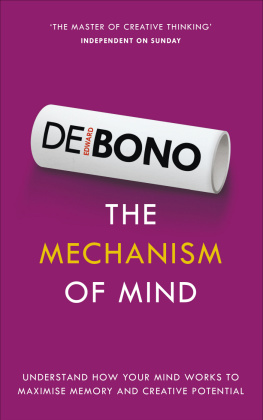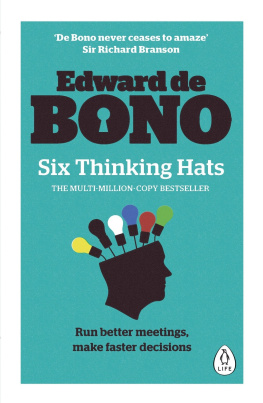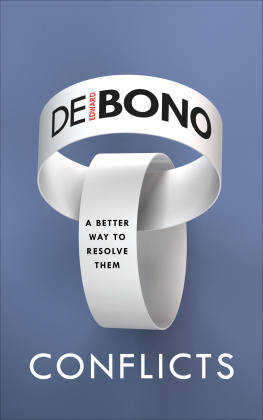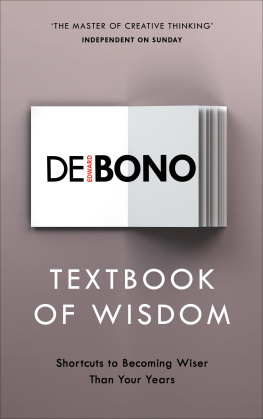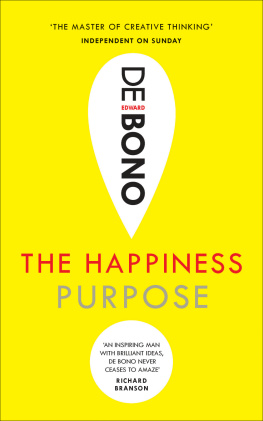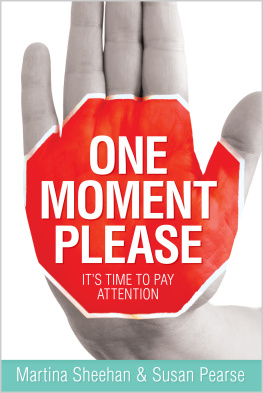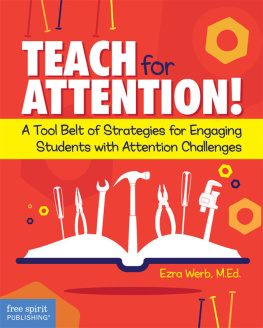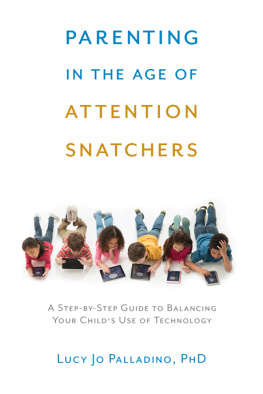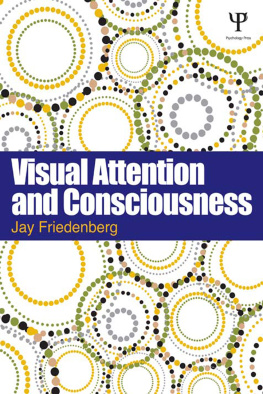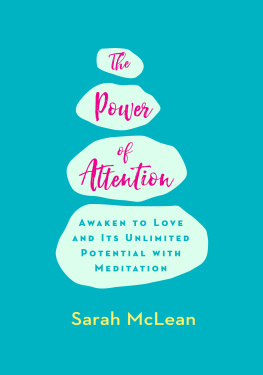IN PRAISE OF EDWARD DE BONO
'Edward doesn't just think. He is a one-man global industry,whose work is gospel in government, universities, schools,corporates and even prisons all over the world' Times 2
'The master of creative thinking' Independent on Sunday
'Edward de Bono is a cult figure in developing tricks tosharpen the mind' The Times
'Edward de Bono is a toolmaker, his tools have beenfashioned for thinking, to make more of the mind'Peter Gabriel
'de Bono's work may be the best thing going in the worldtoday' George Gallup, originator of the Gallup Poll
'The guru of clear thinking' Marketing Week
www.edwarddebono.com
ALSO BY EDWARD DE BONO FROM VERMILION
How to Have a Beautiful Mind
The Six Value Medals
H+ (Plus) A New Religion?
How to Have Creative Ideas
This eBook is copyright material and must not be copied, reproduced, transferred, distributed, leased, licensed or publicly performed or used in any way except as specifically permitted in writing by the publishers, as allowed under the terms and conditions under which it was purchased or as strictly permitted by applicable copyright law. Any unauthorised distribution or use of this text may be a direct infringement of the author's and publisher's rights and those responsible may be liable in law accordingly.
ISBN 9781407023168
Version 1.0
www.randomhouse.co.uk
1 3 5 7 9 10 8 6 4 2
Published in 2008 by Vermilion, an imprint of Ebury Publishing
Ebury Publishing is a Random House Group company
Copyright McQuaig Group Inc. 2008
Edward de Bono has asserted his moral right to be identified asthe author of this Work in accordance with the Copyright, Designand Patents Act 1988.
This electronic book is sold subject to the condition that it shall not by way of trade or otherwise, be lent, resold, hired out, or otherwise circulated without the publisher's prior consent in any form other than that in which it is published and without a similar condition including this condition being imposed on the subsequent purchaser
The Random House Group Limited Reg. No. 954009
Addresses for companies within the Random House Group can befound at www.rbooks.co.uk
A CIP catalogue record for this book is available from the BritishLibrary
ISBN: 9781407023168
Version 1.0
Copies are available at special rates for bulk orders. Contact thesales development team on 020 7840 8487 for more information.
To buy books by your favourite authors and register for offers,visit www.rbooks.co.uk
PREFACE
Attention is a very key part of thinking. Yet we payvery little attention to attention itself. It is assumedthat it just happens.
Attention can be pulled or attracted to somethingunusual. If you saw someone lying in the road, yourattention would go to that person. If you saw abright pink dog, your attention, and your sympathy,would go to that dog.
That is precisely the weakness of attention. It ispulled to the unusual. How much attention do wepay to the usual?
Perception is a key part of thinking. Research byDavid Perkins at Harvard has shown that ninety percent of errors of thinking were errors of perception.
No amount of excellent logic will make up forerrors of perception. Goedel's theorem shows thatfrom within a situation no amount of logic canprove the starting points, which remain arbitraryperceptions.
Attention is a key element of perception. Withoutthe ability to direct attention, we see only thefamiliar patterns.
DIRECTING ATTENTION
What can we do about attention? Instead of waitingfor our attention to be pulled towards somethingunusual, we can set out frameworks for 'directing'our attention in a conscious manner.
Just as we can decide to look north or south-east,so we can set up a framework for directing ourattention. That is what the Six Frames are all about.
Each frame is a direction in which to look. We lookand then notice, and note what we see in thatdirection.
In this way we can look for need satisfaction. Wecan look for value. We can look for interest. We canlook for accuracy, etc. Each of the Six Frames is usedto direct our attention.
MASSES OF INFORMATION
We are surrounded by information. It has neverbeen easier to obtain information (the internet,etc.) But information by itself is not enough. It ishow we look at the information that matters. Howdo we get the most value from the information?That is an area that needs attention.
The Six Frames provide a method for extractingmore value from information. They are therefore asimportant as the information itself.
The method is very simple to use. To be effective,however, it is essential to be deliberate anddisciplined. Just to believe you are doing somethingis not as good as doing that thing formally anddeliberately.
Introduction
The big enemy of good thinking is confusion.
Unfortunately, the more active the mind, thegreater the risk of confusion. The aim of all goodthinking is clarity. But clarity is no good if it is atthe expense of comprehensiveness. To be very clearabout a tiny part of the situation is no good at all and even dangerous. There is a need to obtainclarity and comprehensiveness at the same time.
The main cause of confusion is trying to do everythingat once. When the mind tries to doeverything at once, the mind ends up doing onething thoroughly and other things hardly at all.
That is why my Six Thinking Hats is sucha powerful framework. In a discussion, if we try todo everything at once we end up in the negativeand critical mode because this is the easiest modeand the one we use most often. The Six Hats is nowvery widely used, even at top economic meetings,because it ensures a thorough exploration of thesubject and a discussion that is constructive.
We live in an information age. We are bombardedby information and we have easy access to as muchinformation as we need in fact much more thanwe need. How do we react to that information?
If you have a very specific need for information anda very specific question that needs an answer, thenyou go to the right place and get the answer. If youneed to find a flight from London to Paris thatleaves London as soon as possible after six in theevening, you go to an airline timetable or ask yourtravel agent. There is still some thinking to be doneregarding your choice of airport and airline. Thetraffic on the road to Heathrow is likely to be veryheavy at that time.
If we only dealt with information that we reallyneeded, life would be simpler but very limited andvery dull. We also need to react to the informationthat we come across on television and radio and innewspapers, magazines and other people's conversations.How do we react to that information?
There are many important aspects of information,such as accuracy, bias, interest, relevance, value, etc.We could seek to assess these different aspects all atonce. We could also separate them out to avoidconfusion and to make sure that we cover all thedifferent ways of looking at the information.
That is what Six Frames For Thinking aboutInformation seeks to do. We look through one frameat a time. How accurate is this information? Whatbias is there in the information? The Six Frames arelaid out in this book.
You can get into the habit of using the framesyourself. You can deliberately direct your attentionto one or other frame. You can ask someone else touse a particular frame: 'Try the Square Frame onthis. What do you see?' The frames can also be usedin a discussion where everyone adopts the sameframe at a given moment.
If you ask someone to go out into the garden andlook at all the colours, that person is likely to noticethe dominant colours red in roses, yellow indaffodils, etc. but may not notice colours that areless obvious. If you asked the same person to go outand look for the colour blue, and then the colourred and then the colour yellow, the attention scanwould be much more comprehensive.


